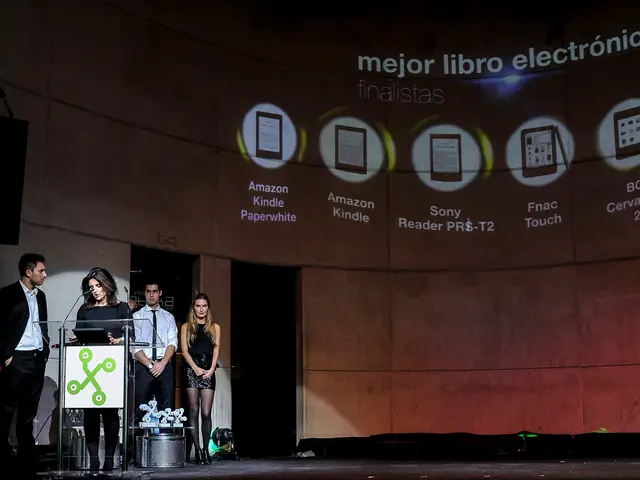Scientists in Texas Develop a Safe Approach to Manufacturing Nuclear Fusion Fuel
Powering the Planet, One Fusion at a Time: The Game-Changing Lithium Enrichment Method
Imagine a world where energy is cheap, clean, and abundant, fueling our cities, homes, and industries without draining our planet's resources. That dream might not be too far-fetched, thanks to a groundbreaking discovery by researchers at Texas A&M University. They've stumbled upon a novel lithium isotope enrichment method, promising to revolutionize the production of fuel for nuclear fusion and potentially turn the tables on our energy crisis.
Published in the scientific journal Chem, their research, titled "Electrochemical 6-Lithium Isotope Enrichment Based on Selective Insertion in 1D Tunnel-Structured V2O5," has already sent ripples throughout the scientific and energy communities.
"We're breathing new life into nuclear fusion, arguably the most promising source of clean, limitless energy," says Sarbajit Banerjee, a professor and researcher at ETH Zurich and Texas A&M, one of the authors of the paper. "Nuclear fusion is the primary source of energy emitted by stars like our sun."
The concept of nuclear fusion on Earth is a simpler, more accessible alternative to space-based models, which typically involve tritium and deuterium isotopes. However, tritium is rare and radioactive, and most fusion reactors currently "breed" it on demand to generate energy. Breeding tritium boils down to bombarding lithium isotopes with neutrons, where the ultra-rare lithium-6 is more efficient in producing tritium.
Enriching lithium-6 from naturally abundant mixtures has been a toxic and environmental catastrophe. Historically, the United States produced 6Li at the Y12 plant at Oak Ridge National Laboratory in Tennessee for thermonuclear weapons applications. The process involved liquid mercury, leading to the release of about 330 tons of mercury into waterways and shutting down the operation in 1963 due to environmental concerns. Mercury, a toxic substance notoriously difficult to clean up, still poisons Tennessee today, six decades later.
The team at Texas A&M stumbled upon their breakthrough during a project focused on cleaning groundwater contaminated during oil and gas extraction. They developed a compound called zeta-V2O5, which they used as a membrane to filter the water. While running the water through this membrane, they noticed something remarkable: it was highly effective at isolating lithium-6. Intrigued, the team decided to explore whether it could harvest lithium-6 from lithium isotope mixtures without mercury.
Lo and behold, it worked. Their new method utilizes the essential working principles of lithium-ion batteries and desalination technologies. Positive lithium ions are drawn into the one-dimensional tunnels of zeta-V2O5, where lithium-6 ions form stronger bonds due to their unique properties and are trapped more effectively than lithium-7 ions. As lithium ions are absorbed, the ζ-V₂O₅ material changes color from bright yellow to dark olive green, providing a real-time monitoring indicator of lithium capture.
Banerjee believes this discovery could lead to a massive shift in how fuel is developed for fusion generators, without requiring a massive redesign of existing reactors. It could also pave the way for more sustainable and environmentally friendly production of nuclear fusion fuel by eliminating the need for toxic mercury and offering a potentially cost-effective solution for lithium-6 enrichment.
While fusion energy is still not imminent, experts suggest real-world applications could become a reality within the next two to three decades. Despite the considerable challenges, Banerjee remains optimistic. "Fusion is too important a prize to give up on," he says. "The transformative potential has always been clear, but somewhere along the way, there have been critical gaps in engineering designs, materials science for extreme environments, and understanding of the complexity of plasma processes."
In the race to sustainable energy, the breakthrough at Texas A&M represents another crucial step forward. The team's work offers an exciting prospect for cleaner, safer, and more affordable fusion energy, potentially ending the joke about the ever-elusive breakthrough that's always "just around the corner."
- The lithium enrichment method discovered by Texas A&M University researchers, as detailed in their paper "Electrochemical 6-Lithium Isotope Enrichment Based on Selective Insertion in 1D Tunnel-Structured V2O5," may revolutionize the production of fuel for nuclear fusion, which could be a viable solution for our energy crisis.
- This discovery, pioneered by Sarbajit Banerjee, a professor and researcher at ETH Zurich and Texas A&M, provides a more environmentally friendly approach to lithium-6 enrichment compared to the traditional methods, which were known for their toxicity and environmental impact.
- The new method utilizes principles similar to those found in lithium-ion batteries and desalination technologies, and it offers potential billions in cost savings by eliminating the need for toxic mercury and simplifying the lithium-6 enrichment process.
- As the future unfolds, the implications of this breakthrough could lead to the sustainable and large-scale production of clean, safe, and cost-effective nuclear fusion energy, potentially revolutionizing the way we power our planet.







